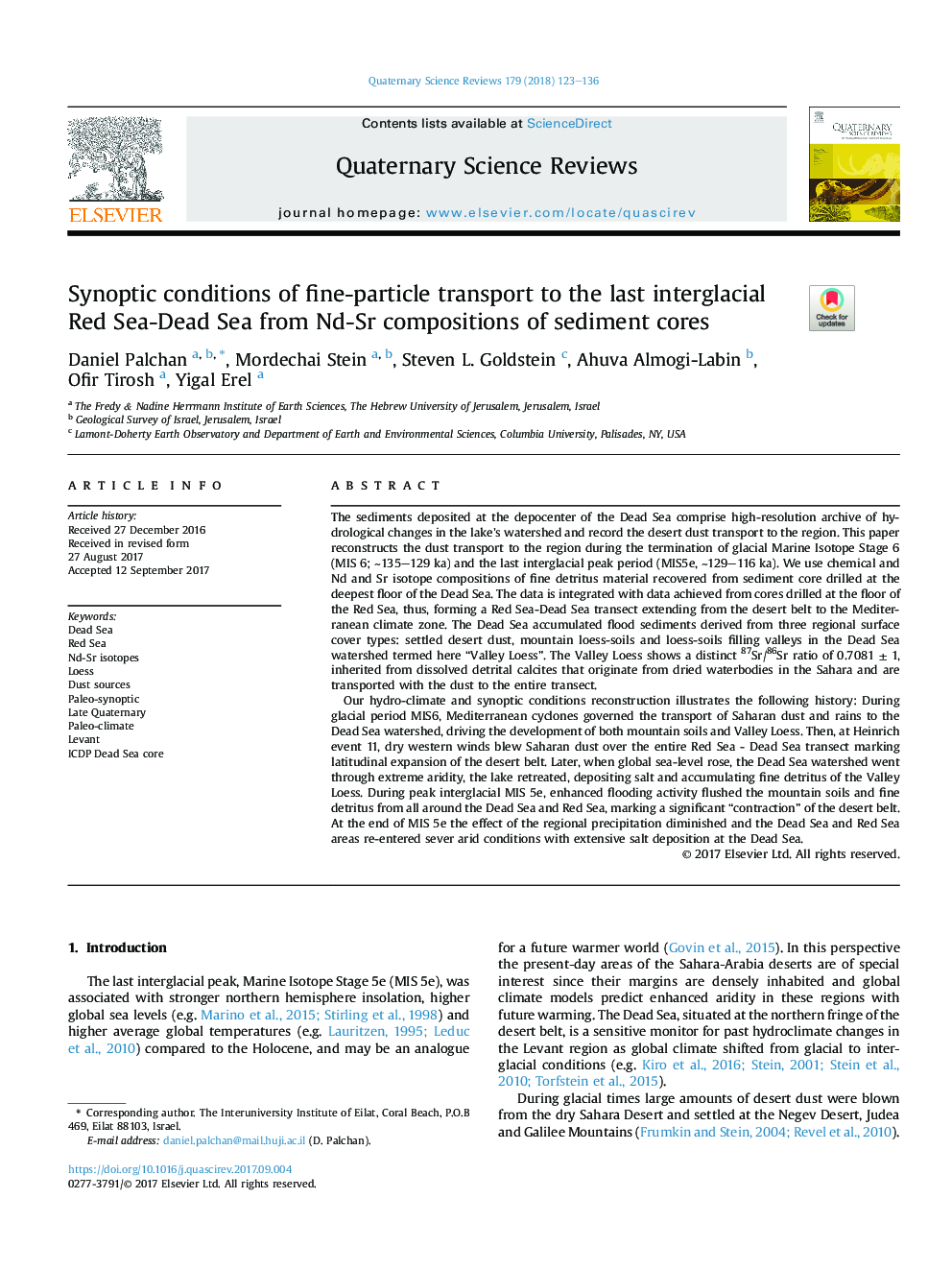| Article ID | Journal | Published Year | Pages | File Type |
|---|---|---|---|---|
| 8915052 | Quaternary Science Reviews | 2018 | 14 Pages |
Abstract
Our hydro-climate and synoptic conditions reconstruction illustrates the following history: During glacial period MIS6, Mediterranean cyclones governed the transport of Saharan dust and rains to the Dead Sea watershed, driving the development of both mountain soils and Valley Loess. Then, at Heinrich event 11, dry western winds blew Saharan dust over the entire Red Sea - Dead Sea transect marking latitudinal expansion of the desert belt. Later, when global sea-level rose, the Dead Sea watershed went through extreme aridity, the lake retreated, depositing salt and accumulating fine detritus of the Valley Loess. During peak interglacial MIS 5e, enhanced flooding activity flushed the mountain soils and fine detritus from all around the Dead Sea and Red Sea, marking a significant “contraction” of the desert belt. At the end of MIS 5e the effect of the regional precipitation diminished and the Dead Sea and Red Sea areas re-entered sever arid conditions with extensive salt deposition at the Dead Sea.
Related Topics
Physical Sciences and Engineering
Earth and Planetary Sciences
Geology
Authors
Daniel Palchan, Mordechai Stein, Steven L. Goldstein, Ahuva Almogi-Labin, Ofir Tirosh, Yigal Erel,
